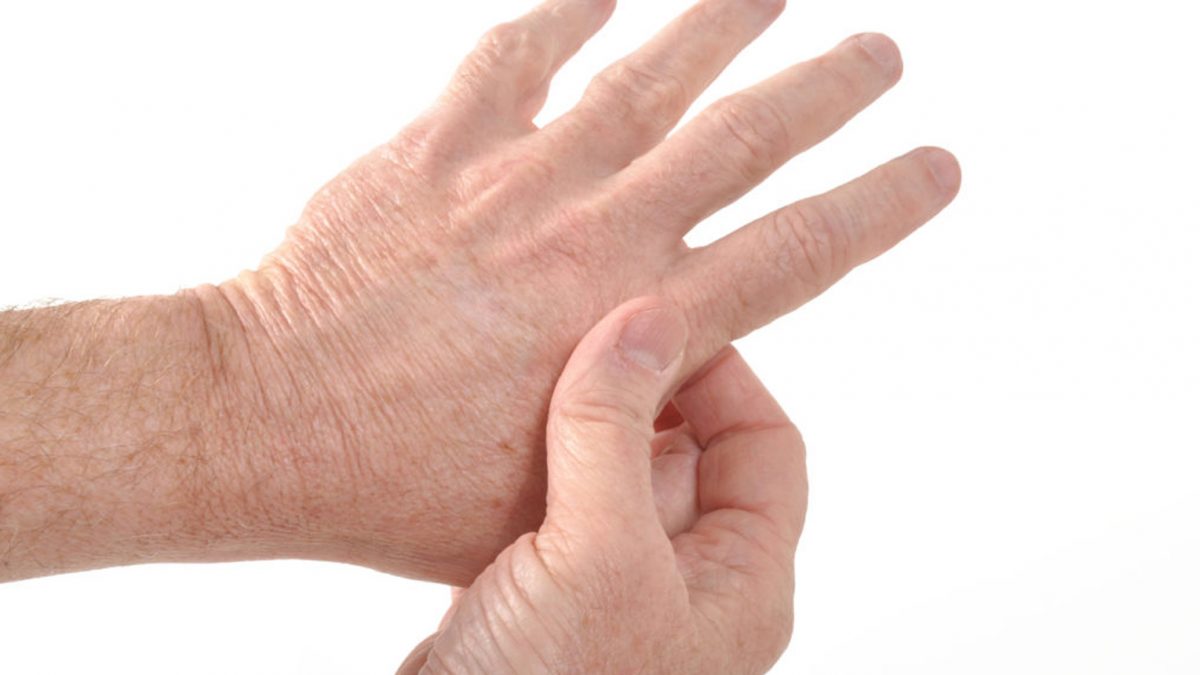Hand arthritis is one of the quite common diseases in the elderly, directly affecting the daily activities of the patient. Hand arthritis should be detected early and have a timely treatment regimen, otherwise, it will lead to many dangerous complications, even polio. To better understand hand arthritis in the elderly, invite you and SunMate to follow the detailed information through the article below.
What is hand arthritis in the elderly?
Hand arthritis is a term used to describe swelling in the joints of the fingers or wrists, causing pain, swelling, stiffness, and fatigue in the hands. The disease is common between the ages of 60 and 65, but there are still cases where symptoms of hand arthritis start from the age of 55.
The incidence of arthritis increases with age because the older the blood and nutrients to feed the joints will be significantly reduced, the aging process of cartilage develops rapidly, making the cartilage and joints weaker and impossible ” support “with factors that adversely affect joints.
Unlike other types of osteoarthritis such as knee, spine, shoulder, and hand arthritis that are small in size, do not have to support the body weight, so the disease can completely be controlled and improved if such as getting proper care and treatment, dangerous complications are prevented.
Causes of hand arthritis in the elderly
The main cause of hand arthritis in the elderly is due to age, over time, the organs in the body and joint cartilage gradually age, inflammation will cause the cartilage to be eroded, causing the condition. swelling and redness of the knuckles.
Besides, there are also some other causes of wrist/finger arthritis in the elderly:
- Due to injury: Labor accident, sports accident, traffic accident … causing the hand joints to suffer a great force, leading to dislocation and arthritis.
- Due to the nature of work: Some statistics show that the subjects that are required to work continuously in hand joints for a long time such as factory workers, maids, office workers … have an incidence of inflammatory disease The palm joint is quite large.
- Due to genetics: If a family member has a history of osteoarthritis, especially wrist pain, you will be at a higher risk of osteoarthritis than others.
- Because of bacteria: Viruses, parasites from the blood will move into the membrane surrounding the hand joint to create TNF-alpha – substances capable of activating the reactions of osteoarthritis of the hand.
- Osteoarthritis: psoriatic arthritis, gout, osteoarthritis, rheumatoid arthritis, … is also one of the main causes of hand arthritis in the elderly.
- Wrist syndrome: usually occurs in people over 40 years old, when a disorder of the hand and wrist causes fluid in the nerve stick to increase, leading to pain, swelling, and numbness.
- Weather, environment: changing weather, changing cold seasons, causing the body to not adapt in time, especially the elderly and people with poor resistance, causing swelling and pain in the hands to recur. again.
Symptoms of hand arthritis
Hand arthritis manifestations based on the degree of damage and the cause of the disease, the pain can appear suddenly and may also be persistent, progressing in stages.
- The first stage: At wrist joint positions, the fingers of the hand will be swollen and painful, especially when moving, performing the grip, the feeling is often more painful than usual, especially in the morning.
- Progressive stage: Pain occurs with sleep and inactivity, persistent pain with a sharp red swelling at the knuckles, spreading to both the forearms and the nape of the neck.
- Severe stage: At this time, hand arthritis has turned worse, pain appears at all times, hands are numb, movement is extremely difficult, accompanied by a fever, fatigue.
You can recognize the disease through some outstanding symptoms such as:
- The knuckles are red, tender, or painful to the touch.
- Mobility is affected, joints are weak, can not be as flexible as before.
- When moving, the feeling of creaking or creaking.
- The pain is more permanent over time, initially dulling after turning the throbbing pain bar and spreading to many other locations
Diagnostic measures for hand arthritis
If joint pain persists, you must conduct examination and treatment at quality medical facilities. The doctor will diagnose the disease by assessing, reviewing symptoms, examining the wrist and history of the condition, followed by a physical examination.
When the clinical examination is finished, the doctor may recommend the patient to perform subclinical tests to give the most accurate results such as:
- Diagnostic by images: Through X-rays, CT images, MRI …, doctors will easily cavity the area where the likely hand arthritis is likely.
- Nerve impulse measurement: to determine the genetic function of the wrist and finger joint and the degree of nerve compression to the hand joint positions.
In addition, the doctor can also prescribe some other diagnostic measures such as blood tests, arthroscopy … to make sure and make final conclusions.
Treatments for hand arthritis
A person with arthritis may be able to combine therapies without surgery, but for severe and serious illness, the doctor will prescribe a surgical option.
- Medication Use: Your doctor will prescribe either topical medications, prescription pain relievers, or over-the-counter pain relievers.
- Joint braces limit the movement of the wrists and fingers, they help the patient relieve pain, the joints are rested and positioned in the right place.
- Injections: In case of ineffective splints and drugs, doctors can use additional drugs to reduce pain and reduce inflammation for the patient.
- Surgery: The last resort is surgery when the patient cannot fold the finger and the methods above are ineffective. Depending on the condition and condition of each person, the doctor will recommend the right form of hand arthritis surgery, after the surgery, you will brace or wear a bandage for about 6 weeks, then practice therapeutic exercises to improve. efficiency faster.




